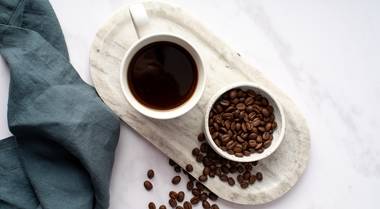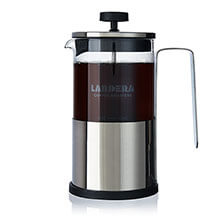Coffee and Antioxidants: Does Roast Matter?
October 29, 2024
by Natasha Nesic

One of those great questions is, 'Does roasting impact antioxidants in coffee? And if so, how does it impact those antioxidants?'
Well, a great question deserves a great answer, so let's dive in and attempt to do justice to this valid query.
Understanding Antioxidants in Coffee
The first thing we would recommend is checking out one of our previous articles on the antioxidants in coffee itself. This is because:a) There are quite a lot of them, and they are super useful to know and understand for when you might research other foods and beverages (like tea!) that contain the same or similar antioxidants.
b) It will make it easier to understand when, in this article, we refer back to the particular compounds or general types of antioxidants that have been previously mentioned.
For example, coffee contains anthocyanins, which can also be found in blue-red plant matter like purple kale, blackberries, blueberries, and red cabbage. Pretty cool crossover, right? You can taste these anthocyanins particularly in rich, fruit-forward coffees like our Ethiopian Limu Washed.

The Delicious Science Behind Roasting
That being said, let's get into the delicious science.There's a fantastic study done on differently roasted coffee extracts' effects on mice. It revealed a number of interesting phenomena that occur to antioxidants in coffee during the roasting process, saying that due to the Maillard reaction, yep, the same fun chemical reaction that gives us caramelized sweetness in slow-cooked French onion soup or the drool-worthy char on a cast-iron seared steak; basically, anytime you start with a savory ingredient and use the power of time and heat to transform it into sweetness- the beans will have different antioxidant yields depending on essentially how deeply they have been roasted.
To continue the steak metaphor we started just now, the study implied that lighter roasts have more chlorogenic acid, while medium and darker roasts have more of these Maillard Reaction Products (or MRPs), wherein chlorogenic acids may be integrated into melanoidins, which are phenolic compounds that are in greater concentration in those darker roasts.
Why Do We Care About These Compounds?
So why do we care about these compounds with odd and convoluted names?Chlorogenic acid, for one, is linked to reducing the effects of oxidative damage.
Meanwhile, melanoidins are important because they contribute to the flavor experience via polysaccharide formation and increase the coffee's antioxidant capacity.
Experiencing Antioxidants in Different Roasts
So how do we think about the way antioxidants are expressed in our own cups and brewing methods?A great way to investigate this for yourself is by trying different roasts of coffee yourself!
We recommend starting with a mild variety like the Monobamba Washed. Grab the green (aka raw) variety. When making a green coffee, so you'll get the benefit of tasting the mouthfeel of the increased chlorogenic acid. It should feel slightly 'crispy,' similar to the feeling you get as you bite through the skin of a just-ripened apple or when a slice of pineapple puckers your palate.
From there, you can move on to Lardera's new dark roast, the French Roast brought to us from sunny Peru. Take the time to taste the depth and richness of the Maillard Reaction in action!

Brewing Methods to Maximize Antioxidants
And if you're wondering how best to prepare these coffees for tasting, have no fear. There is never one true perfect way, so we instead make some gentle recommendations. The French Press, is a fantastic, low-key method that allows you full control of the brewing process. All you need are ground beans and hot water, easily available at your fingertips.And if you find that you're suddenly in a stretch of warm weather this autumn, and want to make time to go to the beach one last time before the holiday season'you crazy kids!'maybe you'd like an even more hands-off method of preparation. Then please look no further than our set-it-and-forget-it Cold Brew Pitcherl! You'll get to taste the variety of those antioxidants at any temperature that suits your needs for the moment. And it fits so neatly in your fridge, you could have cold brew well into the winter if you so desire.
